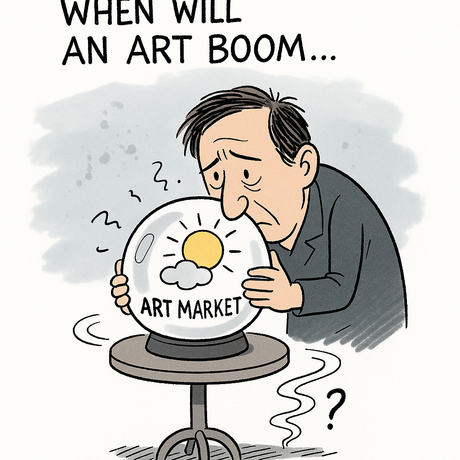The seventh edition of Made in L.A., the Hammer Museum's biennial exhibition featuring artists from the greater Los Angeles area, has opened to mixed reviews. While the show includes several standout pieces, critics argue that the curators' self-described "no-methodology methodology" has resulted in a scattered and unimaginative presentation that lacks curatorial vision.
Despite the exhibition's overall shortcomings, several artists have created compelling work, particularly those given dedicated gallery spaces. Hannah Hur's stunning five-panel installation "Suspension" (2025) stands out as a highlight, displayed in a vault-like gallery that enhances the viewing experience. Each painted panel features a grid of delicate white lines punctuated with white flower-like patterns, creating spatial confusion that challenges viewers' perceptions. The room's architecture becomes integral to the work, with cement floor lines and curved shadows from what appears to be a floating panel transforming both the physical viewing space and the conceptual spaces within each painting.
Another notable work is Na Mira's "Sugungga (Hello)" (2025), which skillfully disorients histories and mythologies through its reference to a Korean allegory about a sick dragon king and a clever rabbit. The installation projects two videos onto opposite sides of holographic glass - one filmed from a taxi circling a walled former military building constructed by the Japanese army and later used as a U.S. military base, and another showing an inflatable rabbit sculpture within the grounds. These projections collapse the boundaries between inside and outside, casting ghostly moving shadows and distorted imagery throughout the room. The work embodies Korea's history of occupation while positioning viewers as both victims and complicit co-conspirators within systems of power.
Gabriela Ruiz's assemblage "Collective Scream" (2025) perfectly captures contemporary anxieties about technology and surveillance. The piece combines cartoonishly painted screaming faces, a surveillance camera displaying viewers on a screen, and an LED streetlamp. This work addresses how social media platforms manipulate users under the guise of connection, damaging thought patterns by creating personalized echo chambers and flattening diverse content - from commerce and memes to life milestones and horrifying news clips - into a single stream competing for attention.
Other exhibition highlights include Amanda Ross-Ho's poignant oversized replicas of her father's nursing home door decorated with seasonal ornaments, Carl Cheng's unique erosion machines, and Patrick Martinez's installation "Battle of the City on Fire" (2025), featuring a ruined and graffitied cinderblock structure. These works demonstrate the range of artistic practices emerging from Los Angeles.
However, the exhibition's lack of a clear curatorial thesis relegates it to the default approach of large museum group shows, which primarily serves to add legitimacy and cultural capital to artists already vetted by the market or other institutions. Many of the included artists are already familiar figures in the Los Angeles art scene, regularly showing throughout the city. This predictable selection raises questions about the biennial's role in discovering and promoting emerging talent.
Critics suggest that future iterations of Made in L.A. should take more risks and venture beyond safe, established choices. The current exhibition, while containing strong individual works, fails to present a cohesive vision or challenge viewers' expectations about contemporary Los Angeles art.
Made in L.A. 2025 continues at the Hammer Museum, located at 10899 Wilshire Boulevard in Westwood, through March 1, 2026. The exhibition was organized by curators Essence Harden and Paulina Pobocha, with assistance from Jennifer Buonocore-Nedrelow.






























